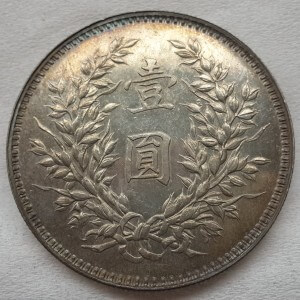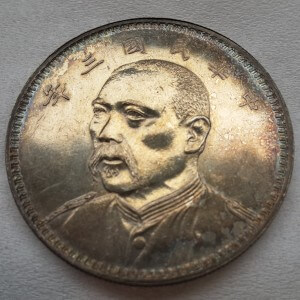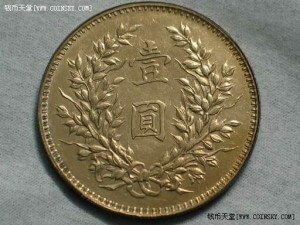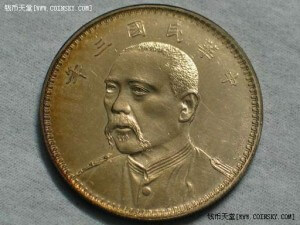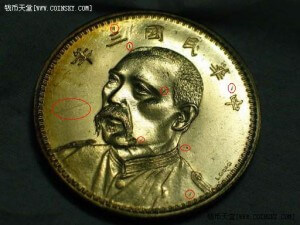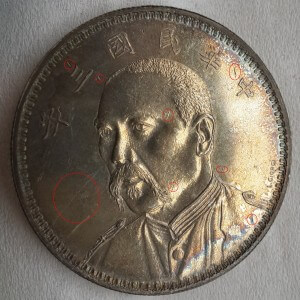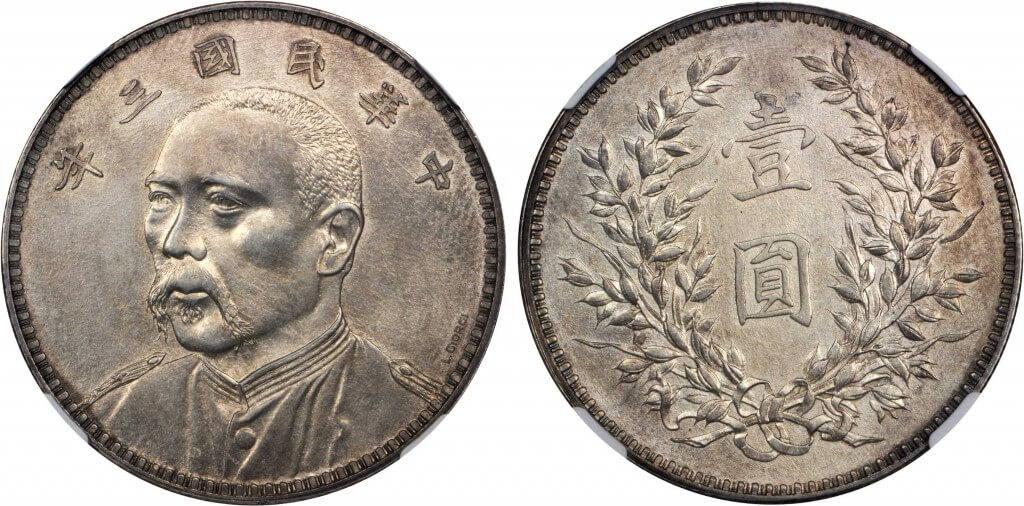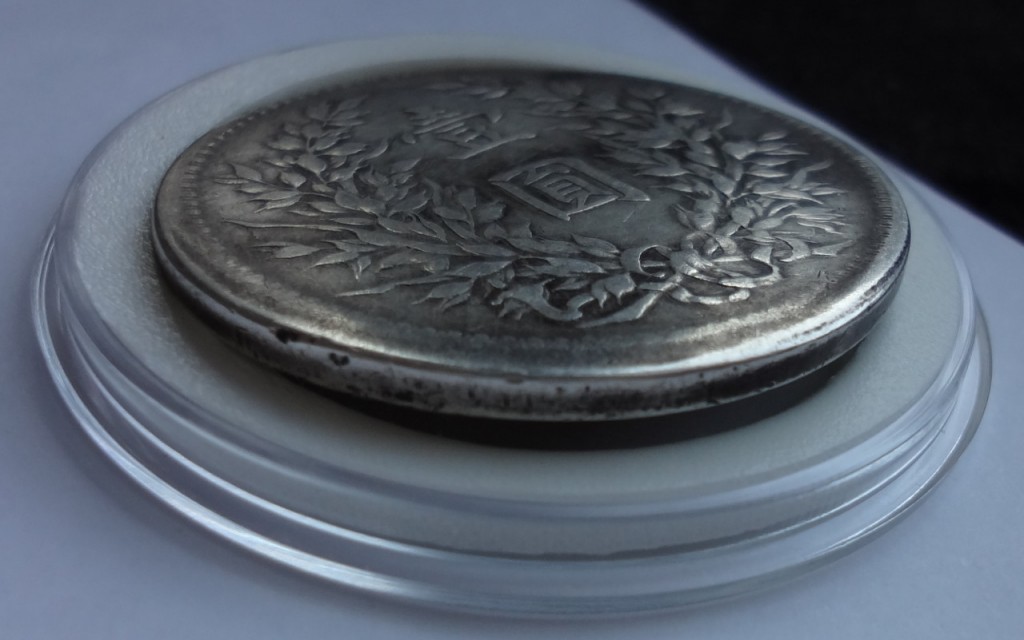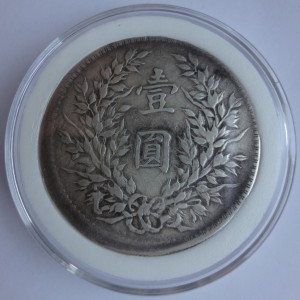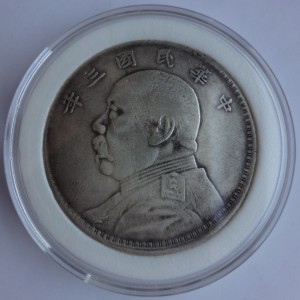Summer is nearing its end, and the Hong Kong auctions season begins. August is usually an interesting time for Chinese coins collectors, when rare coins are made available on the market and new prices are set.
I was browsing the catalogue of Rarehouse, when I was intrigued by one of the highlight of the auction. The denticles of the lot 1355, a rare Yuan Shih Kai pattern coin, bothered me. These teeth reminded me a lot of two other coins I have seen before.
The first coin was introduced to me by a good friend, who was already in the midst of negociation with the owner and wanted my opinion about the deal. It was a beautiful specimen of an extremely rare Yuan Shih Kai dollar, with the signature of the famous Italian engraver L. Giorgi.
The price tag was not too high for this type – ¥200,000 CNY, or about $32,000 USD. This looked like a good deal, but I usually collect Imperial dragon dollars, so I decided to learn more about this type online.
That’s how I stumbled upon the sister of that coin. It was sold in 2005 on Coinsky, one of the largest numismatic forums in China, by the same collector from the Jiangsu province that now proposed to my friend the coin that sparked my curiosity.
The identical scratches could not lie; as in previous articles, this was an indubitable proof that both coins were fake (click on the picture on the right for higher resolution).
Both replica coins also shared a strange defect, especially for pattern coins: the denticles on their obverse were really badly struck. Here is for comparison a picture of a genuine, graded pattern, lot 41099 at the upcoming Stack’s Bowers auction:
Small details matter: as you can see, the denticles are sharp and well struck.
My advice to fellow collectors looking forward to acquire rare and expensive Chinese coins this season would be to favour coins graded by PCGS. Raw coins can be cheaper, but if they end up being fake, you are on your own. For this kind of high level items, this can mean a $32,000 USD setback…
The plain edge of this “Fatman dollar” is not the result of circulation wear. Despite being called 光边 in Chinese, literally “bald edge”, it has not been shaved either. The usual reeding was simply never fully impressed onto the coin blank. If you look carefully indeed, you will notice a thin reeded part up to 6 o’clock. This Yuan Shih Kai dollar has actually suffered a random minting error called “broadstrike“.
Modern coins are machine struck. A blank is automatically placed above the lower die (or anvil die), fixed to the bed of the machine. The collar die is then brought up so as to encircle the blank, as the upper die (hammer die) is brought down with tremendous pressure. This cause the soft metal to flow like a viscous solid: prevented from escaping on the sides by the collar, it effectively gets imprinted by filling the engraving of the dies. If the collar was crenated, the edge of the coin will thus be reeded. This mechanical process was repeated about one hundred times per minute by the coining presses available at the time, and failures would inevitably happen sometimes. Broadstrike is caused by a particular problem: the collar die which is supposed to raise and surround the blank may get stuck due to some accumulation of debris or grease. If that happens, the metal unconstrained by the collar expands and increases in diameter during the strike. This results in a coin with all its design elements present, but an expanded shape: a broadstrike.
In the case of this “Fatman dollar“, we can deduce from the very thin reeding that the collar was partially engaged. The side with no reeding, completely unrestrained by the collar die, expanded the most. This type of coins is referred to as uncentered broadstrikes. This kind of error provides informations about the minting process. The traces left by the collar being on the reverse part of the edge means that the Yuan Shi Kai portrait was engraved on the hammer die.
Such misshapen coins are the result of random errors, but are accounted for by the mint. They are systematically destroyed when found during counting and packing the coins for dispatch. Very few of these coins indeed manage to slip through the combined vigilance of counting machines and human assayers to end up circulating. Even then, due to their suspicious appearance, they often are the first to get melted down for their precious metal content. It is therefore very rare for these unloved coins to reach the hand of a caring collector!
